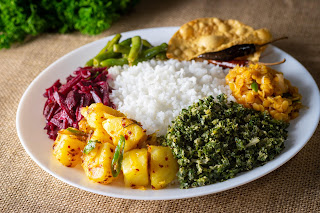King of Ravana
Ravana is a prominent figure in Hindu mythology. He is known as the primary antagonist in the epic Ramayana, which is one of the two major ancient Indian epics. Ravana is depicted as a powerful demon king with ten heads and twenty arms. He ruled the kingdom of Lanka (now Sri Lanka) and was considered one of the most formidable beings in existence.
According to the Ramayana, Ravana was born to a great sage named Vishrava and his wife, Kaikesi. He was a devout follower of Lord Shiva and possessed immense knowledge, power, and strength. Ravana's strength was enhanced by a boon he received from Lord Brahma, which made him nearly invincible against gods, demons, and other celestial beings.
Despite his exceptional qualities, Ravana's arrogance and desire for power led him down a destructive path. His most notorious act was the abduction of Sita, the wife of Lord Rama, who was an incarnation of Lord Vishnu. Ravana's action sparked a great war between him and Lord Rama, leading to the ultimate defeat and death of Ravana.
Ravana is often portrayed as a complex character in Hindu mythology. While he is primarily remembered as a villain due to his actions, some interpretations also highlight his intelligence, musical talents, and his dedication to Lord Shiva. In some versions of the Ramayana, Ravana is portrayed as a tragic figure who paid a heavy price for his arrogance and lust for power.
Ravana's story serves as a moral lesson against the destructive forces of ego, greed, and unchecked ambition. He is considered a symbol of evil and an embodiment of the vices that can corrupt even the most powerful individuals.
The evidence for Ravana's existence primarily comes from the ancient texts of Hindu scriptures, including the Valmiki Ramayana and the Tulsidas Ramayana. These texts provide detailed accounts of Ravana's lineage, his kingdom of Lanka, his interactions with other characters, and his ultimate defeat at the hands of Lord Rama. These scriptures are considered sacred and have been revered by Hindus for centuries.
Apart from textual evidence, there are also archaeological and cultural references that suggest the existence of Ravana and his influence. For example, the island of Sri Lanka, which is believed to be the location of Ravana's kingdom, has various sites and landmarks associated with the Ramayana. These include the Ashok Vatika (Ravana's garden), Sita Kotuwa (Sita's prison), and Ravana Ella Falls (Ravana's waterfall).
Furthermore, Ravana is an important character in traditional dance, drama, and art forms in many South Asian countries, including India, Sri Lanka, and Indonesia. His depiction in sculptures, paintings, and other forms of artwork is widespread, showcasing the cultural significance and enduring influence of the Ramayana.
It is important to note that while Ravana's existence is widely accepted in the context of Hindu mythology and religious beliefs, there is no historical or scientific evidence to support his existence as a real historical figure. The Ramayana and the characters within it are considered mythological and are often interpreted as symbolic representations of various human qualities, virtues, and vices.



Comments
Post a Comment